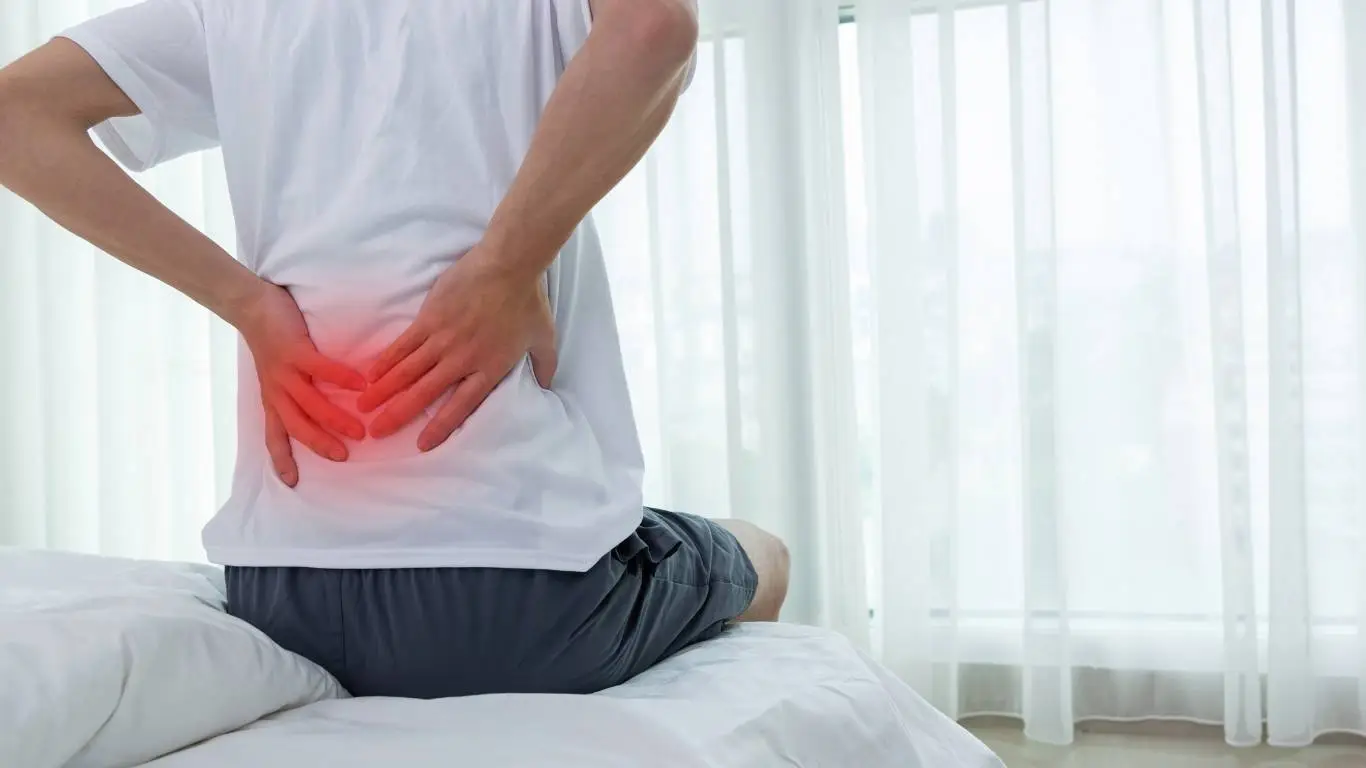Sacroiliac Joint Dysfunction Relief That Actually Works
Let me tell you, I used to think that the nagging ache in my lower back was just part of getting older — you know, “just back pain” from bad posture or long hours at the desk. Turns out, I had no clue how important the sacroiliac (SI) joint was until my physical therapist gently poked right near my pelvis and I practically jumped off the table. That tiny joint can cause a mountain of discomfort, and yet, most people don’t even know it exists. If you’re struggling with unexplained lower back, buttock, or even leg pain, it might be time to stop ignoring the SI joint.
What Is Sacroiliac Joint Dysfunction?

The sacroiliac joints are where your sacrum (that triangle-shaped bone at the bottom of your spine) meets your ilium (your pelvic bones). You have two of them, one on each side. Unlike knees or hips, these joints don’t move much — but when they do too much or too little, pain can flare up. That’s sacroiliac joint dysfunction in a nutshell.
It can be a tricky little culprit because it mimics other conditions like a herniated disc or sciatica. That’s why accurate diagnosis is everything. If you’re curious about other types of back pain and how they’re diagnosed, the folks over at Healthusias’ back pain diagnosis guide offer an in-depth look that helped me make sense of it all.
Common Causes of SI Joint Dysfunction

Over the years, I’ve learned the hard way that your sacroiliac joints can become dysfunctional for all kinds of reasons. Here’s what commonly triggers them:
- Pregnancy and childbirth: The hormone relaxin causes ligaments to loosen, leading to joint instability.
- Repetitive movements: Activities like running or lifting weights unevenly (I’m guilty of this at the gym) can throw things off.
- Leg length discrepancy: A difference in leg length can stress the joint unevenly.
- Inflammatory conditions: Issues like ankylosing spondylitis target the SI joint.
- Past trauma or surgery: Accidents or pelvic surgery can affect SI joint alignment and function.
And honestly, sometimes it’s just wear and tear. If you’ve been standing all day for years (shout out to my barista friends), your SI joints can silently suffer. The causes of back pain section breaks this down brilliantly and helped me finally piece together my own symptoms.
What It Feels Like — Real Symptoms, Not Just “Aching”

Most people describe SI joint dysfunction as a deep ache in the lower back or buttocks, sometimes spreading down into the thigh. But it’s not just pain — for me, it felt like one side of my pelvis was “locked up,” like I couldn’t move smoothly. That stiffness made even simple things — like putting on socks — way harder than it should’ve been.
Other symptoms might include:
- Sharp pain when transitioning from sitting to standing
- Pain aggravated by climbing stairs or standing for long periods
- Discomfort that worsens on one side, often near the dimples of the lower back
- Improvement with walking — but pain returns at rest
If you’ve been told it’s sciatica but treatments aren’t working, you might want to consider the SI joint as a suspect. The back pain anatomy and types article gives some visual explanations that really helped me visualize what was going on inside my own hips.
How It’s Diagnosed (Hint: Imaging Isn’t Always Enough)

Getting a proper diagnosis can be frustrating — I went through two chiropractors and an orthopedic before finally landing on a physical therapist who nailed it. Here’s what’s typically used to diagnose SI joint dysfunction:
- Physical exams: A series of provocative maneuvers — trust me, they sound worse than they are — help isolate the joint.
- Diagnostic injections: If numbing the joint reduces pain, that’s a strong sign it’s the SI joint causing trouble.
- Imaging: X-rays and MRIs help rule out other issues, but they often don’t show SI dysfunction clearly.
I was amazed how a simple hands-on test was more effective than two rounds of imaging. According to experts from ncbi.nlm.nih.gov, clinical evaluation has to lead the way here — imaging alone often misses the mark.
What Happens If You Ignore It?

Ignoring SI joint pain can lead to long-term compensation issues. I ended up with hip pain on the other side because I was constantly favoring one leg. Your body will always try to find a workaround — and that often means new problems.
There’s also a serious mental load that comes with persistent pain. I started avoiding social outings because sitting through dinner was just too much. If that sounds familiar, you’re not alone — check out the mental aspects of back pain page that dives into the emotional toll this kind of pain can have.
You might want to explore the broader approach to back health in their main back pain resource as well. I still revisit that guide anytime my lower back flares up.
How to Treat Sacroiliac Joint Dysfunction Without Surgery

After struggling with SI joint dysfunction for what felt like forever, I finally found relief — and no, it didn’t involve anything invasive. Most people don’t need surgery; what they do need is the right combination of treatments, patience, and a lot of self-awareness. Here’s what worked for me (and many others):
Targeted Physical Therapy
Hands down, this made the biggest difference in my recovery. A physical therapist who understands SI joint mechanics can teach you how to stabilize the joint, reduce inflammation, and retrain your movement patterns. I was surprised at how small, subtle movements had such a huge impact. If you’re exploring rehab and ergonomic changes, check out the rehab and ergonomic section — it helped me tailor my home setup to prevent flare-ups.
Manual Therapy & Adjustments
Sometimes, the joint just needs a little realignment. I worked with a chiropractor who used a low-force technique to “reset” my SI joint — and while it’s not a long-term fix, it gave me relief when things were really locked up.
Bracing or Sacroiliac Belts
These aren’t forever, but during high-pain days, a supportive belt was a game-changer. It compresses the joint slightly, helping to reduce inflammation and stabilize your movements.
Topical or Oral Anti-Inflammatories
I found topical NSAIDs super useful, especially when I didn’t want to pop more pills. Just be sure you’re not masking the pain so much that you forget to treat the root cause. The conservative treatment section gives a breakdown of safe options that won’t wreck your gut lining.
Lifestyle Shifts That Support Healing

Recovery from SI joint dysfunction isn’t just about what happens in the clinic — it’s about the daily habits you build. Here’s what helped me the most:
- Ergonomic tweaks: I replaced my chair with one that had lumbar support, added a footrest, and stopped crossing my legs (a bad habit that killed my symmetry).
- Balanced movement: I made a conscious effort to switch weight between legs while standing and avoid leaning into one hip while waiting in line — you’d be amazed how much these small things matter.
- Anti-inflammatory eating: My physical therapist recommended focusing on whole foods, omega-3s, and magnesium-rich meals. The lifestyle and diet section is packed with tips and recipes that actually taste good.
And yes, it took some trial and error. But treating this holistically made all the difference. I even started walking daily again, something I had stopped doing because of the constant discomfort.
Mind-Body Connection: Don’t Overlook This

One thing I didn’t expect: how much stress impacted my SI joint pain. On tough days — emotionally or mentally — my pain always spiked. Turns out, the nervous system and chronic pain are deeply connected. When I added simple breathing exercises and began journaling how my body felt throughout the day, I noticed patterns. This helped me pace better and avoid overexerting myself.
If you’re skeptical (I was too), I’d encourage you to read up on the mental and emotional side of back pain. It’s not about blaming yourself — it’s about building awareness and resilience.
When Conservative Treatment Isn’t Enough

In some cases, conservative care just isn’t enough. For folks who’ve tried everything and still live with debilitating pain, there are a few minimally invasive options:
- Steroid Injections: These can calm inflammation fast. I didn’t need one, but I know someone who had almost instant relief after getting one.
- Radiofrequency Ablation: This sounds intense, but it’s actually a targeted way to calm nerve pain.
- SI Joint Fusion: Considered a last resort, this surgical option stabilizes the joint with implants. It’s come a long way and can be life-changing for the right candidate.
Always consult with a qualified spine specialist who knows their way around SI joint issues. As explained in Healthusias’ surgical treatment guide, these procedures should be carefully considered and not rushed into.
SI Joint Pain and Your Everyday Activities

One thing I learned quickly? This pain shows up when you least expect it. Long car rides, carrying groceries, even twisting awkwardly in bed — these small actions can trigger major discomfort. I started modifying everything:
- Driving: Lumbar cushion + mini breaks every 45 minutes
- Traveling: SI belt + light packing + lots of stretching
- Working: Standing desk + foot elevation + hip-friendly seating
The truth is, you don’t have to stop doing the things you love — but you do have to do them smarter. For people like me who juggle work and movement daily, this page became a sort of survival manual.
What Helped Me the Most (And Might Help You)

Looking back, I wish I had taken my SI joint pain seriously sooner. It wasn’t “just lower back pain” — it was affecting how I moved, worked, and even related to other people. The real breakthroughs came when I:
- Got a real diagnosis (not just “general back pain”)
- Built a rehab routine that respected my limits
- Listened to my body and ditched the “push through it” mindset
You’re not weak for needing help — you’re smart for recognizing when something feels off. Your SI joint might be small, but its impact? Massive. For more detailed insights on related spinal anatomy, I recommend starting with this anatomy guide, and don’t miss the full spectrum of advice over at Healthusias’ main back pain page.

Camellia Wulansari is a dedicated Medical Assistant at a local clinic and a passionate health writer at Healthusias.com. With years of hands-on experience in patient care and a deep interest in preventive medicine, she bridges the gap between clinical knowledge and accessible health information. Camellia specializes in writing about digestive health, chronic conditions like GERD and hypertension, respiratory issues, and autoimmune diseases, aiming to empower readers with practical, easy-to-understand insights. When she’s not assisting patients or writing, you’ll find her enjoying quiet mornings with coffee and a medical journal in hand—or jamming to her favorite metal band, Lamb of God.






